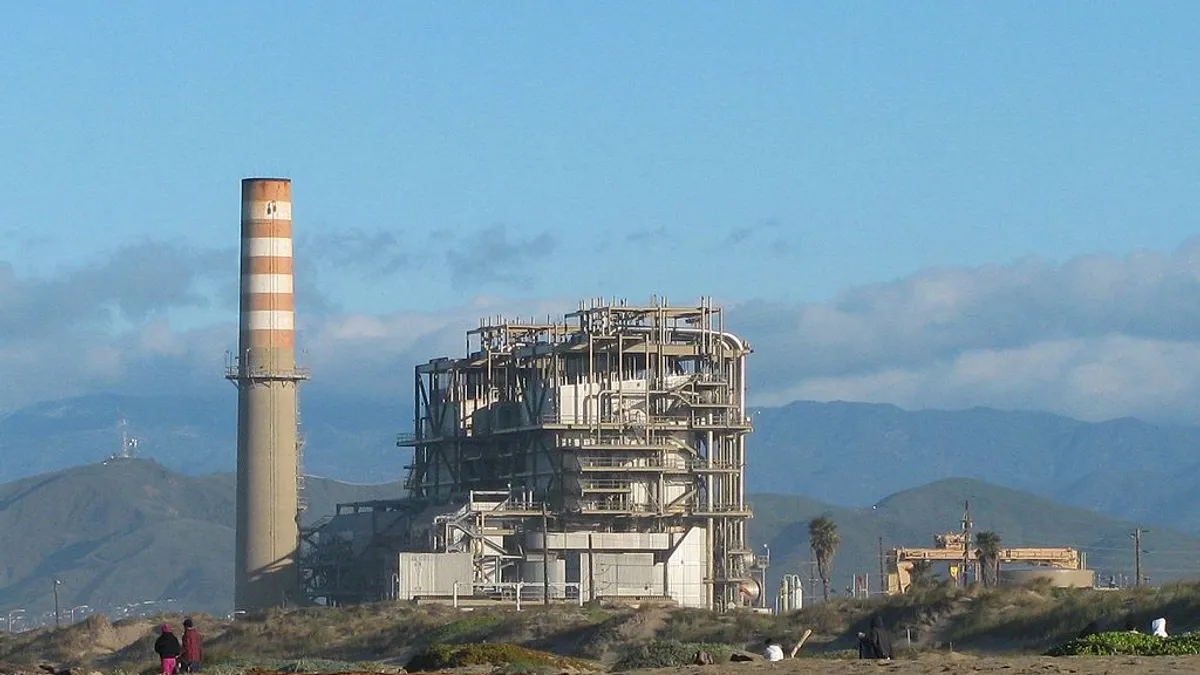Dive Brief:
- The California Public Utilities Commission (CPUC) proposed Thursday the procurement of 2,500 MW "all-source" resources between 2021 and 2023 to increase reliability.
- Utilities, community choice aggregators and direct access providers would be required to conduct all-source solicitations for low-carbon resources, including existing gas-fired generation. More than 4,000 MW of gas-fired generation along California's coast is expected to retire by 2021, but the proposal would allow plants to stay online until new resources are brought into service.
- The CPUC said it expects renewable energy and battery storage will compete well based on recent cost trends. The proposal asks load serving entities to procure energy efficiency and demand response resources as well.
Dive Insight:
The proposed extension of compliance dates for generation expected to retire at the end of 2020 under the state's once-through cooling policies is driven by reliability concerns. But the CPUC said the facilities that would continue operation would only operate during peak load conditions as prices spike or reliability issues arise.
"[T]heir emissions levels and use of seawater for cooling are low," the commission said.
The state has had a wider effort to overhaul the integrated resource planning process for its utilities. Earlier this summer, regulators have identified potential reliability questions between 2019 and 2024 as load serving entities work to meet environmental requirements and the state's clean energy goals.
Earlier this summer, the CPUC issued a commissioner's ruling that recommends the procurement of 2,000 MW of new statewide peak capacity by Aug. 1, 2021. Under Thursday's proposal, new resources would start to come online beginning in the summer of 2021 through the summer of 2023.
"We are managing unprecedented energy market conditions in California, which inform the steps we are taking today," Commissioner Liane M. Randolph said in a statement. Randolph is the lead CPUC commissioner for long-range energy resources planning and ongoing reliability planning.
Summer peak loads are expected to remain high into September. California's energy imports from other states are increasingly uncertain on hot days, as similar weather conditions might increase demand across other Western states. Therefore, the CPUC determined that load-serving entities need to increase generation capacity and not count on importing energy.
Hydroelectric resources are more variable each year and less hydroelectric generation is available across the West based on "changing hydrological patterns," according to the CPUC.
The CPUC could vote on the proposal at its Oct. 24 meeting.














